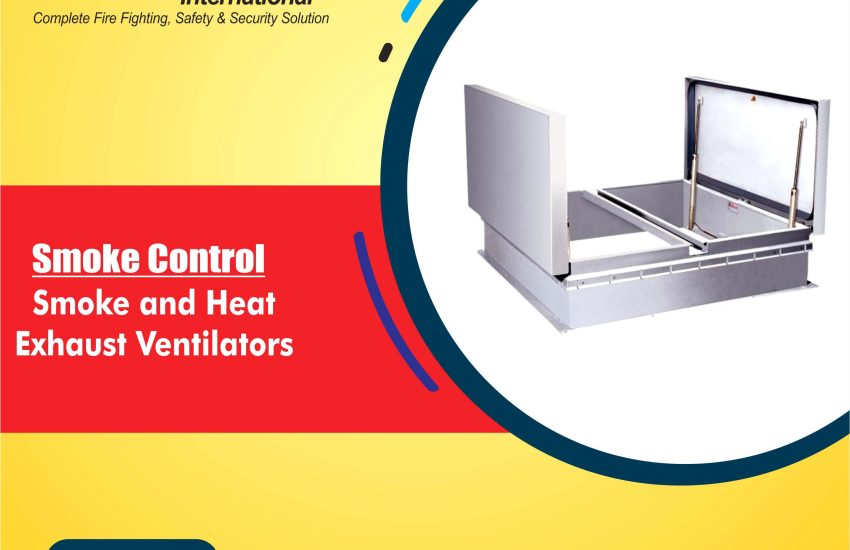Smoke And Heat Exhaust Ventilators (SHEVs) are vital components in building safety systems. These devices manage smoke, heat, and toxic gases during fires, ensuring the safe evacuation of occupants and protecting the building structure. This comprehensive guide will walk you through everything you need to know about SHEVs, including their importance, installation, maintenance, and more.
What Are Smoke and Heat Exhaust Ventilators?
Smoke And Heat Exhaust Ventilators are mechanical systems designed to remove smoke, heat, and other harmful gases from a building during a fire. Installed on the roof or upper parts of a building, these ventilators allow for natural ventilation, preventing smoke buildup and maintaining clear escape routes for people inside.
These ventilators operate by drawing smoke and heat out of the building, creating a clear zone for occupants to exit safely. High-rise buildings, industrial facilities, and large public spaces often require SHEVs as part of fire safety regulations.
Key Benefits of Smoke and Heat Exhaust Ventilators
- Improved Fire Safety
SHEVs help remove smoke and heat from the building. As a result, they maintain visibility, reduce the risk of suffocation, and minimize the damage caused by intense heat. - Protection for Emergency Services
Firefighters can safely enter and extinguish the fire when SHEVs remove smoke. This creates a clear zone, allowing them to work without hindrance. - Regulatory Compliance
In many countries, building codes require the installation of SHEVs. By installing these systems, building owners ensure they meet fire safety standards. - Preservation of Building Structure
Removing excessive heat prevents structural damage. SHEVs help preserve the integrity of the building. - Enhanced Occupant Comfort
SHEVs reduce heat inside a building, making it more comfortable for occupants, especially in commercial and public spaces during emergencies.
How Do Smoke and Heat Exhaust Ventilators Work?
SHEVs typically function in two main ways:
- Natural Ventilation:
Hot gases rise naturally, allowing smoke to exit through the ventilator. The buoyancy effect creates an updraft that helps move smoke out. - Mechanical Ventilation:
Some designs include fans to actively exhaust smoke and heat from the building. These fans activate through fire detection systems, ensuring prompt removal of harmful gases.
These systems keep the air breathable and prevent smoke from spreading throughout the building.
Types of Smoke and Heat Exhaust Ventilators
- Roof-Mounted Ventilators
Roof-mounted SHEVs are the most common type. Installed on the building’s roof, they exhaust smoke and heat, typically activated by fire alarm systems. - Wall-Mounted Ventilators
These ventilators are used when roof installation isn’t practical. Wall-mounted systems help remove heat and smoke from lower levels of the building. - Hybrid Systems
Hybrid systems combine natural and mechanical ventilation. They efficiently remove smoke and heat in larger or more complex buildings. - Natural Ventilators
Relying solely on the natural buoyancy of hot air, natural ventilators are passive systems. They work by creating a temperature difference between the building and the outside air. - Mechanical Ventilators
These systems use fans to force smoke and heat out of the building. They are often used in large open spaces or when natural ventilation isn’t enough.
Key Features of Smoke and Heat Exhaust Ventilators
- Fire Resistance
SHEVs are designed to withstand high temperatures. Their durability ensures they continue to operate during fires. - Automatic Activation
Many systems automatically activate based on smoke or heat detectors, ensuring fast action even if occupants are unaware of the fire. - Durability
Built to endure harsh environmental conditions, SHEVs remain operational during extreme situations. - Energy Efficiency
Modern SHEVs are designed to be energy-efficient, minimizing power consumption while maximizing performance.
How to Choose the Right Smoke and Heat Exhaust Ventilator
Choosing the right SHEV depends on several factors, including the building’s size, occupancy type, and local fire safety regulations. Consider the following checklist:
- Building Type and Size
Larger buildings or industrial complexes may require more powerful systems, while smaller buildings may only need compact models. - Fire Safety Codes
Ensure the system meets local fire safety codes and regulations. These codes typically specify the type, capacity, and placement of ventilators. - Ventilation Requirements
Evaluate the airflow required and the system’s ability to remove smoke and heat effectively. This depends on the building’s volume and layout. - Material Durability
Opt for a system made from heat-resistant materials that can withstand extreme temperatures. - Maintenance and Servicing
Choose a system that is easy to maintain. Regular checks ensure the system remains functional and reliable.
Installation and Maintenance of Smoke and Heat Exhaust Ventilators
Installation Process
Trained professionals should always install SHEVs to ensure proper placement and functionality. The installation process typically involves:
- Site Assessment:
A detailed assessment helps determine the ideal location for the ventilator, whether it’s on the roof or walls. - System Integration:
The ventilator integrates with the building’s fire alarm system, ensuring it activates automatically during a fire. - Testing:
After installation, the system undergoes testing to ensure it ventilates smoke and heat effectively.
Maintenance Guidelines
Regular maintenance ensures the system stays operational. Follow these key maintenance tips:
- Inspect Fans and Blades:
Check that the fans are free from debris and functioning properly. - Check Seals and Gaskets:
Ensure the seals around the ventilator are intact to prevent smoke leakage. - Test System Activation:
Regularly test the system to verify it activates automatically when needed. - Clean the Vents:
Periodically clean the vents and exhausts to prevent obstructions that could hinder airflow.
Conclusion: The Importance of Smoke and Heat Exhaust Ventilators
Smoke and Heat Exhaust Ventilators are crucial for improving fire safety in commercial, industrial, and residential buildings. By removing smoke, heat, and harmful gases, they ensure the safety of occupants and help minimize property damage during a fire. When selecting and installing SHEVs, building owners should consider the building’s specific needs, regulatory compliance, and system efficiency.


